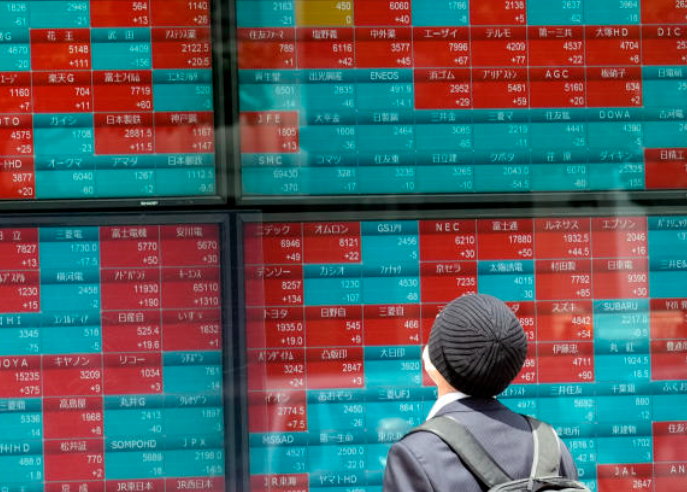As the fear of a US shutdown diminished following Congress’ approval of a short-term financing measure late Saturday to keep federal agencies operating until November 17, oil prices increased and U.S. futures rose.
The majority of Asian shares are up in light trading because several markets are closed for holidays. Due to several markets being closed for holidays, Asian shares were mostly higher in Monday’s light trading. China’s markets are shut down for a weeklong holiday. South Korean markets were likewise shut down. After a central bank survey revealed rising company optimism, Japan’s Nikkei 225 market fell.

Major manufacturers’ business confidence was measured by the Bank of Japan’s “tankan” quarterly survey at plus 9, up from plus 5 in June. Major non-manufacturers’ sentiment increased four points to plus 27, marking the sixth straight quarter of improvement and the highest mark in roughly three decades.
The Nikkei 225 index in Tokyo lost some of its early gains, falling 0.3% to 31,759.88. S&P/ASX 200 Australia fell 0.2% to 7,033.20. Taiex in Taiwan increased by 1.2%, and the SET in Bangkok increased by 0.1%. Wall Street ended the worst month of the year on Friday with more losses. The Dow dropped 0.5% to 33,507.50 while the S&P 500 dropped 0.3% to 4,288.05. To 13,219.32, the Nasdaq composite moved up 0.1%.

Treasury rates began to rise again as the day went on after lowering earlier in the day due to positive inflationary signs. The 10-year Treasury yield dropped to 4.52% late on Thursday before rising back to its previous level of 4.58%. Once more, it’s quite close to its peak level from 2007.
Investors are less willing to pay high prices for equities and other risky investments when Treasurys offer greater returns because they are among the safest investments available. That is a major factor in the S&P 500’s 4.9% September decline, which brought the year’s large gain down to 11.7%.

Treasury yields have been sharply rising as Wall Street adjusts to a new normal in which the Federal Reserve is likely to maintain high interest rates for an extended period of time. The Fed’s primary tool, high interest rates, helps it achieve this goal of bringing still-high inflation down to its objective by slowing the economy and depressing investment prices. The Federal Reserve’s benchmark interest rate is at its highest level since 2001, and the institution hinted this week that it would not drop rates as much as initially anticipated in 2019.
According to the economic data released on Friday, growth in consumer expenditure in the United States was also slightly slower than anticipated in August. That would boost prices, but it might also weaken one of the main forces holding the U.S. economy out of a recession. The restart of student loan repayments in the United States could divert additional money away from consumer spending, which has been essential to maintaining the economy.

This week is due for the most recent monthly update on the U.S. labor market, and the following week brings a few significant inflation reports. The Fed, which has said it will base its next decisions on interest rates on what the latest economic indicators indicate, may find it more difficult if such reports are delayed. On November 1, the Fed’s subsequent rate-setting meeting comes to a close. The dollar increased in Monday’s currency trade from 149.38 Japanese yen to 149.65 yen. From $1.0589 to $1.0575, the euro decreased.
Also Read: Federal Student Loan Payments Have Resumed, What You Need To Know Is Listed Below
image source: google




































